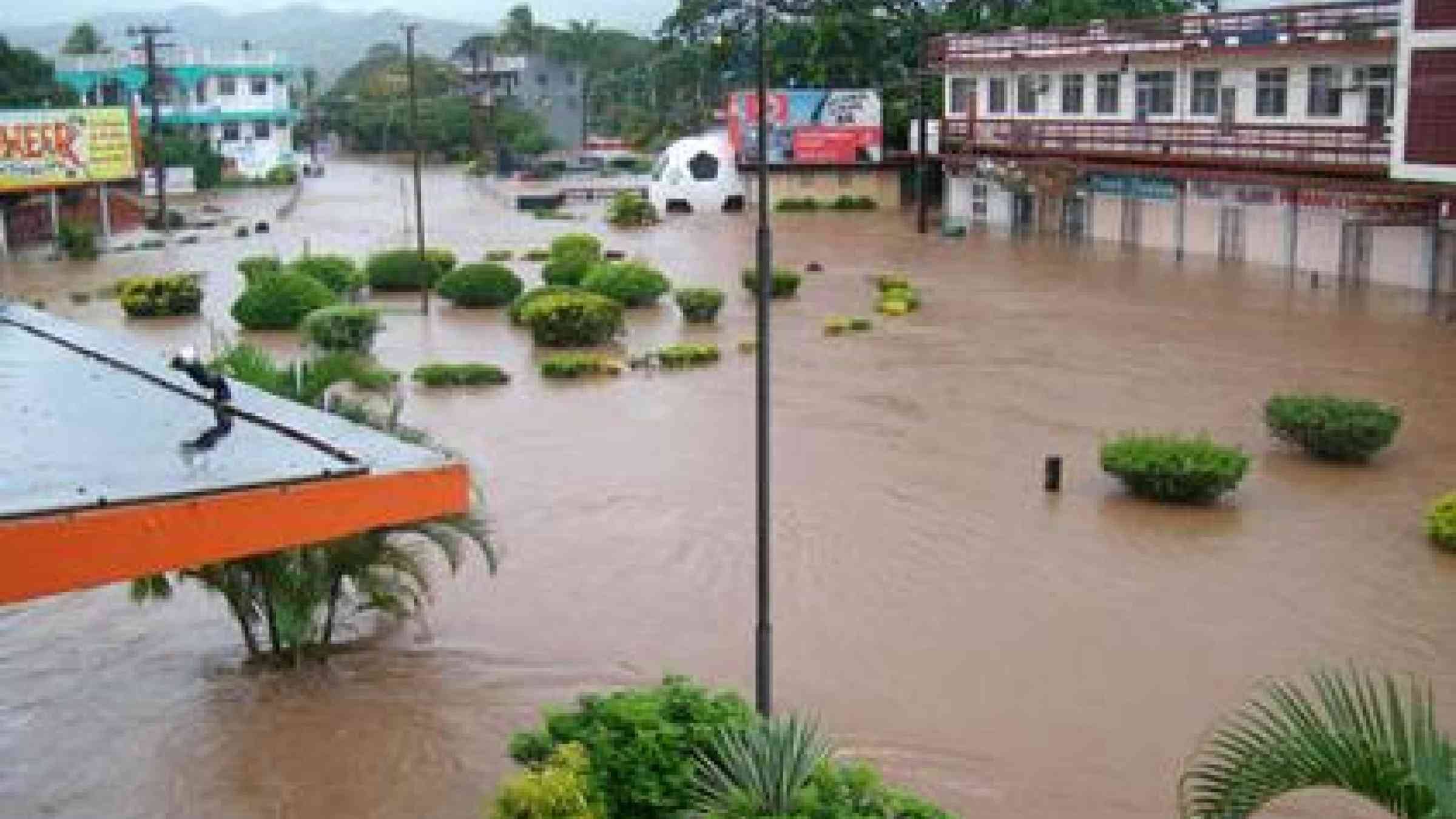Fiji declares 15 day state of disaster

GENEVA, 3 February 2012 - A 15-day state of disaster is currently in effect in areas on the west coast of Fiji that have been ravaged by floods which began on 22 January.
A flood watch is in place as periods of heavy rain are expected. All those living in flood-prone areas have been advised to evacuate and take with them food, water and a change of clothes. As of today, there are 21 active evacuation centres with a total of 1,333 evacuees.
The state of disaster, declared on 25 January by the Government’s Provincial Development and Multi Ethnic Affairs Ministry Permanent Secretary, Colonel Inia Seruiratu, applies to Ba, Lautoka, Nadi, Nadroga, Ra, and Tavua.
In a 48-hour period from 22-24 January, 400 mm. of rainfall was recorded in Nadi, which triggered flooding across the west of Viti Levu.
The International Federation of Red Cross and Red Crescent Societies (IFRC) reports that, “Severe flooding and landslides … have forced thousands from their homes to seek safety in evacuation centres.” Once the floodwaters started to recede, notes the IFRC, there was a trail of devastation. “Crops had been washed away; homes, shops and roads damaged; and communities left with no water or power supply.”
Eight people lost their lives while an initial assessment has estimated damages to all key sectors to be $30.6 million. There are currently 51 cases of disease - predominantly diarrhoea and typhoid - reported in relation to the flooding.
A recent UNISDR and UNDP publication – Disaster Risk Reduction and Climate Change Adaptation in the Pacific: an Institutional and Policy Analysis, states that in the Western part of Fiji high intensity floods are becoming more frequent. In the Nadi area, high intensity floods used to occur every 190 years. By 2100 it is projected that they will occur every 25 years.
As Angelika Planitz, UNISDR’s Sub-Regional Coordinator for the Pacific notes, “These types of events are likely to continue to occur. Scientists are exploring the evidence that climate change and developments in low lying flood-prone areas such as Nadi and Ba are contributing factors. In the interim, improved preparedness and early warning, two important elements of disaster risk reduction, will have to remain important and urgent priorities.”
According to the Fiji Times, “While fingers have traditionally pointed to drainage issues, authorities are at present assessing whether harvesting and farming practices contributed to the magnitude and intensity of flooding and the numerous landslides.”
Forestry Permanent Secretary Viliame Naupoto states: "It is time we relook at our forest code of harvesting practices, see if it is being followed properly; we need to see if we are doing something that is contributing to the situation. We also need to see if people are following the code properly - we need to learn very quickly.
According to the findings of the Government of Fiji’s National Progress Report on implementing the Hyogo Framework for Action (2005-2015): Building the resilience of nations and communities to disasters (HFA), as well as on the Pacific Regional Framework for Action (RFA), both frameworks have been instrumental in helping the country to plan and develop disaster risk management programmes.
Planitz states that “Two of the affected areas, Nadi and Ba are participating in UNISDR’s ‘World Disaster Reduction Campaign - Making Cities Resilient’. In Nadi, an Integrated Watershed Management Programme (IWMP) helps to reduce the risk of flooding from low to medium intensity rainfall. Mitigating impacts from intensive rainfall, however, remains a challenge,” she observes.
Planitz adds: “More low pressure systems are likely to approach Fiji in the coming days. It will be important to warn already affected populations of the potential threats. Getting the messages out to remote areas which are still out of electricity is an important priority.”
The IWMP is funded by the UN Development Programme – Global Environmental Facility (GEF) with support from the Secretariat of the Pacific Community (SPC), the Pacific Islands Applied Geoscience Commission (SOPAC) and the International Union for Conservation of Nature (IUCN).